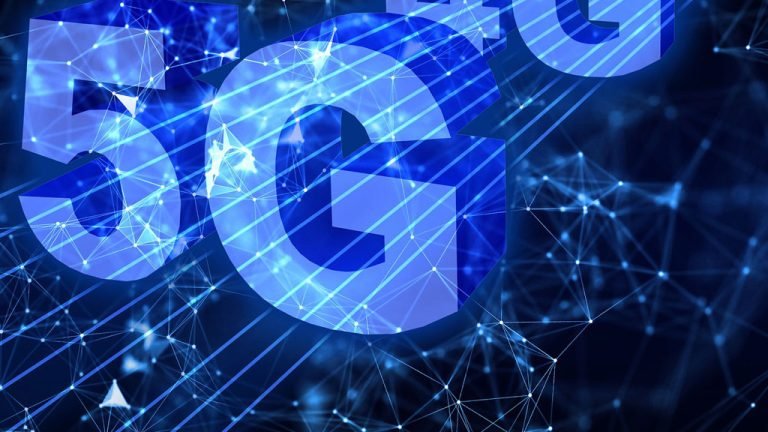How is 5G technology revolutionizing telecommunications?

The fifth generation of cellular networks, known as 5G, is poised to revolutionize telecommunications in profound ways. Building upon the foundations laid by its predecessors, 5G promises unprecedented speed, capacity, and connectivity, opening the door to a host of new applications and services. This essay explores the various dimensions of how 5G technology is transforming telecommunications, delving into its technical advancements, its impact on industries and society, and the challenges it presents.
1. Technical Advancements of 5G
At its core, 5G technology represents a significant leap forward in terms of speed, latency, capacity, and connectivity compared to its predecessors.
- Speed: 5G networks are designed to deliver much faster data speeds than previous generations, with theoretical peak speeds reaching up to 20 gigabits per second (Gbps). This ultra-fast connectivity enables users to download and upload content at unprecedented rates, facilitating seamless streaming, gaming, and large file transfers.
- Low Latency: One of the key technical advancements of 5G is its ultra-low latency, which refers to the time it takes for data to travel between devices. 5G networks aim to achieve latency as low as 1 millisecond (ms), significantly reducing delays in data transmission. This low latency is critical for applications such as real-time gaming, augmented reality (AR), virtual reality (VR), and autonomous vehicles, where even milliseconds of delay can have significant implications.
- Capacity: 5G networks boast substantially higher capacity compared to previous generations, thanks to advanced technologies such as massive multiple-input multiple-output (MIMO) and beamforming. These technologies allow 5G networks to support a larger number of connected devices simultaneously, making them ideal for densely populated areas and environments with high device density.
Connectivity: Another key feature of 5G is its ability to provide reliable connectivity across a wide range of devices, including smartphones, Internet of Things (IoT) devices, industrial sensors, and autonomous machines. This enhanced connectivity enables the proliferation of smart cities, smart homes, and industrial automation, where seamless communication between devices is essential.
2. Impact on Industries
The widespread adoption of 5G technology is poised to revolutionize various industries, unlocking new opportunities for innovation, efficiency, and growth.
- Healthcare: In the healthcare sector, 5G enables remote patient monitoring, telemedicine, and real-time health data analysis. With ultra-low latency and high reliability, healthcare providers can deliver better patient care, especially in rural or underserved areas where access to medical facilities is limited.
- Manufacturing: 5G facilitates the implementation of Industry 4.0 initiatives in manufacturing, enabling the deployment of connected sensors, robots, and machinery. With real-time data transmission and analytics, manufacturers can optimize production processes, improve quality control, and reduce downtime, leading to increased productivity and cost savings.
- Transportation: The transportation sector stands to benefit significantly from 5G technology, particularly in the development of autonomous vehicles and intelligent transportation systems. With high-speed, low-latency connectivity, autonomous vehicles can communicate with each other and with infrastructure elements, such as traffic lights and road sensors, to navigate safely and efficiently.
- Retail: 5G enables retailers to offer immersive shopping experiences through AR and VR technologies. With high-speed connectivity, customers can access rich multimedia content, virtual fitting rooms, and personalized recommendations, enhancing their overall shopping experience and driving sales.
- Entertainment: The entertainment industry is undergoing a transformation with the advent of 5G, as it enables the streaming of high-definition video, augmented reality gaming, and immersive media experiences. Content creators can leverage 5G networks to deliver rich, interactive content to users on-the-go, opening up new revenue streams and business models.
3. Societal Impact
Beyond its implications for industries, 5G technology has far-reaching societal impacts, reshaping how people communicate, work, and interact with their environment.
- Digital Inclusion: 5G has the potential to bridge the digital divide by providing high-speed connectivity to underserved communities and rural areas. By expanding access to broadband internet and digital services, 5G can empower individuals with education, employment opportunities, and access to essential services.
- Smart Cities: 5G serves as a foundational technology for the development of smart cities, where interconnected devices and sensors facilitate efficient resource management, traffic optimization, and public safety. From smart energy grids to intelligent transportation systems, 5G enables cities to become more sustainable, resilient, and livable.
- Remote Work: The COVID-19 pandemic has accelerated the shift towards remote work, highlighting the importance of reliable high-speed internet connectivity. With 5G, remote workers can access cloud-based applications, collaborate in real-time, and participate in virtual meetings with ease, regardless of their location.
- Education: 5G technology has the potential to transform education by enabling immersive learning experiences, virtual classrooms, and remote tutoring. With high-speed connectivity, students can access educational resources, collaborate with peers, and engage in interactive lessons from anywhere in the world, democratizing access to quality education.
- Public Safety: 5G enhances public safety and emergency response capabilities by enabling real-time communication, video surveillance, and location tracking. First responders can leverage 5G networks to coordinate emergency responses more effectively, analyze situational data, and provide timely assistance to those in need.
4. Challenges and Considerations
While 5G technology holds immense promise, it also presents several challenges and considerations that need to be addressed for its successful deployment and adoption.
- Infrastructure: Deploying 5G infrastructure requires significant investments in new hardware, including small cells, antennas, and base stations. Ensuring adequate coverage and capacity in both urban and rural areas poses a logistical and financial challenge for telecommunications providers and governments.
- Spectrum Allocation: 5G networks rely on a range of frequency bands, including low-band, mid-band, and high-band spectrum. Spectrum allocation and management are critical considerations, as different bands offer trade-offs in terms of coverage, capacity, and propagation characteristics.
- Security and Privacy: As 5G networks connect an increasing number of devices and critical infrastructure, cybersecurity becomes a paramount concern. Securing 5G infrastructure against cyber threats, data breaches, and unauthorized access requires robust encryption, authentication mechanisms, and security protocols.
- Regulatory Framework: Regulatory frameworks governing 5G deployment vary across countries and regions, impacting the pace and scope of rollout. Harmonizing regulations related to spectrum allocation, infrastructure deployment, and data privacy is essential to facilitate the global adoption of 5G technology.
- Digital Divide: Despite its potential to bridge the digital divide, 5G deployment could exacerbate existing disparities in access to broadband internet and digital services. Addressing issues of affordability, accessibility, and digital literacy is crucial to ensure that the benefits of 5G are equitably distributed across society.
5G technology represents a paradigm shift in telecommunications, offering unparalleled speed, capacity, and connectivity that will revolutionize industries, empower communities, and reshape society. From healthcare and manufacturing to transportation and entertainment, the impact of 5G will be felt across various sectors, unlocking new opportunities for innovation, efficiency, and growth. However, realizing the full potential of 5G requires addressing challenges related to infrastructure, spectrum allocation, security, regulation, and digital inclusion.

